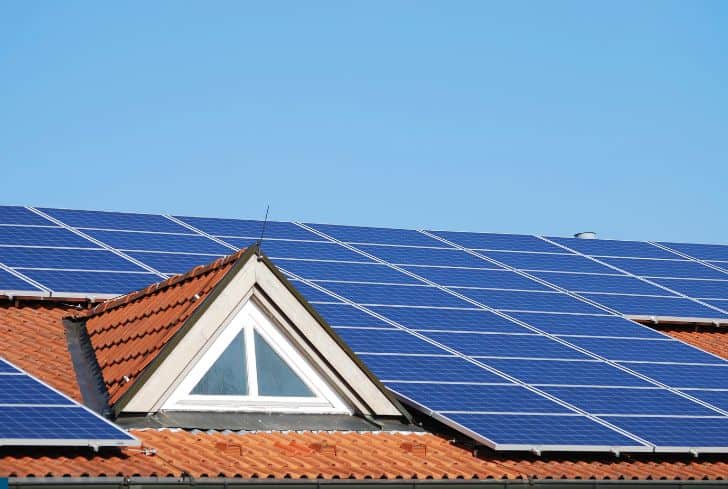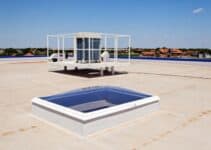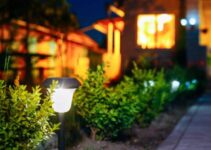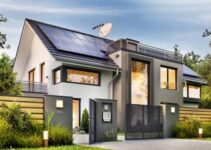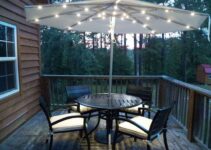If you live in an area where vegetation is abundant, you may worry about protecting your solar panels from falling twigs, branches, and trees. However, solar panels need access to enough light.
That’s why many property owners have chosen to invest in covers that protect to a significant extent. It doesn’t just shield your solar panels from falling objects but also the harsher punishments of Mother Nature.
If you are considering installing a cover over your solar panels, you’ll naturally wonder if the efficiency will be affected. We’re here to tell you it will, but not significantly. Keep reading to know the impact of a plastic cover on solar panels, and by the end of this piece, you’ll know if using it is an ideal decision for you. Dive in!
Will a Solar Panel Work Through Clear Plastic?
Solar panels have been designed to function through the photovoltaic effect. Here, it captures electromagnetic radiation or photons from the sun and converts it from direct current DC to AC or renewable energy.
This means you should expect the clear plastic cover to share in the photons that reach the surface of your solar panels. It reduces efficiency, no matter how much.
Now, this won’t be a problem in most cases, especially if you have solar batteries. And if you live in an area with adequate sunlight, you have hit the jackpot.
While converting DC to AC won’t be a problem during the day, there’s barely enough sunlight to keep working at night. So, if you have some solar batteries, whether or not the protective covers affect the photovoltaic effect will be insignificant.
The answer is yes if you’re still asking if a solar panel will work through the clear plastic. In fact, you’ll barely notice the presence of an additional layer. However, the system’s efficiency may drop by as much as ten percent. Again, you won’t notice it, but it’ll be there.
There are many reasons your solar panels will be affected by the additional layer of protection over them, regardless of the material it is made from.
Clear plastic creates an additional distance for the light to travel through, changing the angle of incidence between the sunlight and the solar panels. Besides, there is a difference between the refractive index of air and plastic.
The sensitivity of solar panels allows them to easily detect and trap light, which is why they will work even when the sun is not at its brightest.
However, this may also be a problem where plastic covers are related – the antireflective coating of the panels won’t work as efficiently because that sensitivity is reduced when the light bounces or is refracted from another layer.
Finally, the creation of an air gap may occur. This is the space between the solar panels and plastic cover. Unfortunately, this loophole may trap rain and other elements that the plastic cover was designed to protect the solar panels from.
In a nutshell, your solar panels will work through clear plastic. But there will be a reduction in efficiency.
Do You Remove the Plastic Film on Solar Lights?
Manufacturers often attach a plastic film to solar panels to protect the screen from scratches and damage during transit.
This is different from a plastic cover, designed to protect the panels when installing them. The plastic film is a thin layer of protection that you should remove before or after installing the solar panels on your roof.
Aside from protection during transit, this plastic film does nothing but reduce the efficiency of the solar tech. Regardless of how thin it is, it is still a layer with a more refractive index than air.
This means that where sunlight would quickly penetrate the glass surface and increase the efficiency of the photovoltaic effect, the plastic film would inhibit this high concentration level. It results in less efficiency that may or may not be insignificant.
Additionally, there is something called the antireflective coating. This is a mechanism that increases the potency of light that passes through.
Leaving the plastic film on the solar panels will reduce the efficiency of the antireflective coating.
So, you see that it’s better taken off despite the temptation to leave the plastic film on your solar panels.
Why Would a Homeowner Want to Add Clear Plastic on Top of the Solar Panel?
After spending a considerable amount on your solar panels and inverter, you’d undoubtedly want to protect your investment.
That’s why a homeowner would want to add clear plastic on top of a solar panel. Many things put fear in the minds of property owners with solar panels.
Let’s examine them one after the other, and we’ll also determine if solar panel covers are worth it.
Rain
Rainfall is a perfectly natural weather phenomenon; hate it or love it, you can’t change it.
Unfortunately, there’s a widespread belief that rainfall can damage your solar panels, which is another reason a homeowner would want to install solar panels.
However, rainfall is a blessing, if anything. And you don’t need protection from it. Instead, allow it to clean your solar panels. The photovoltaic cells have been designed to ensure snow and rainwater fall smoothly over them.
If you have installed the panels correctly, there’s no reason to worry about water damage.
Wind
If you live in one of the windy places or the southern states, like Florida, you’ll naturally worry about the effects of hurricanes or strong winds on your solar panels.
Well, the manufacturers thought about that too. In fact, some adjustments ensure proper installation in some states. If your technician follows the state directions, the wind won’t be a problem for your solar panels.
They must be firmly installed so that even the harshest hurricanes won’t faze them. A way to prevent wind damage is to ensure little to no space between the roof and the panels.
This leaves no room for wind to try to separate the solar panels from the roof.
In fact, installing solar panels on your roof will also protect your external structure. Again, this is because solar panels use reinforced glass that is often stronger than you think.
On the other hand, putting an extra layer of protection over the panels may create an environment that damages them. This is because you’re giving the wind the avenue to pull the structures apart.
Hail
Hail is another problem you’ll worry about when installing solar panels.
This natural weather phenomenon cannot also be prevented, so solar panel manufacturers have developed the system in a reinforced manner. In most cases, the glass is even tested against the force of a hailstorm, and it won’t be sold if it doesn’t meet sturdier standards.
Additionally, your technician must install the solar panels at the right angle, such that the photovoltaic cells won’t be parallel to the sky.
This is done for two reasons – to give the solar cells maximum access to sunlight and to ensure that even the larger hailstones don’t hit the surface head-on.
If you use a technology that allows you to adjust the angle of your solar panels, I recommend a direction that faces the horizon.
You can still purchase a plastic solar panel cover, but it may not be as efficient.
What Factors Could Affect the Energy Efficiency of a Solar Panel With a Plastic Layer on it?
When you install a plastic layer over your solar panels, there will be some changes in efficiency.
It is caused by many factors, such as:
The Thickness of the Plastic Layer
If you are dealing with an extra thick plastic cover, you can only expect it to trap some sunlight. Naturally, this affects the efficiency because there’s a consistent reduction in the number of photons that reach the photovoltaic cells.
This may be between three to ten percent energy loss, depending on the brand of plastic covers you’re using.
The Air Gap
The air gap refers to the space between your solar panels and the covering film. If it is a lot, you leave room for other elements to tamper with the performance.
In addition to losing sunlight, that extra space may trap rainfall, dirt, and other substances that block photons. As much as you can, keep the thickness of the air gap to a minimum.
The Type of Surface
Smoother surfaces are better for solar panels than jagged ones. This is because it is easier for light to pass through.
Now, if you put an additional layer over uneven solar panel surfaces, the efficiency will be affected because of the less reflective surface.
Are Solar Panels Glass or Plastic?
They can be both or either.
Manufacturers these days play around with a combination of glass and plastic. The photovoltaic cells are made from silicone material, while the external surface is made from tempered glass.
However, solar technology is progressing and will soon be able to do away with silicon solar cells because of cost factors. Scientists are playing around with different plastic materials, including amorphous silicon cells.
Some brands also produce their solar panels from recycled plastic.
Furthermore, there are solar windows made from glass. This is a futuristic way to harness solar power. Instead of wasting window space, you can install solar panels that have been designed for this.
Glass and plastic are common materials that are interchangeably used in solar technology.
Do Solar Panels Work Through Plexiglass?
Plexiglass is a sturdy transparent plastic often used in the place of glass. And the way solar panels are designed, they work with visible light.
This means that if nothing blocks sunlight access, your solar panels will function.
Plexiglass is a transparent material that can be used to protect solar panels. However, the efficiency will be affected because of several factors we have explored already.
Solar panels work through plexiglass, but experts advise against using this supposedly protective surface because it sometimes retains too much heat. And this isn’t good for the photovoltaic cells.
Do Solar Panels Work Through Tinted Glass?
Most certainly, yes. Solar panels work through tinted glass.
However, the tinted glass was designed to keep sunlight out. This reduces the efficiency of the solar panels because solar cells need non-polluting sunlight.
If the solar panels are placed in your car or across a tinted window, they will still work. And you may not even notice a reduction in the performance.
It depends on the type of tinted glass, especially how dark it is. In most cases, people install dark windows and doors to reduce heating costs.
The less heat in the house, the lesser the chances of the sunlight overheating your home. This sustainable way of living can be combined with solar energy, even if there’ll be less performance.
Conclusion
It is a common belief that solar panels need protection when installed on the roof. This may be true to an extent, but often, it isn’t.
Solar panels have been designed to withstand many natural and unnatural elements that may damage them. Your own isn’t to try to protect it, but to maintain and enjoy the cheaper technology.
